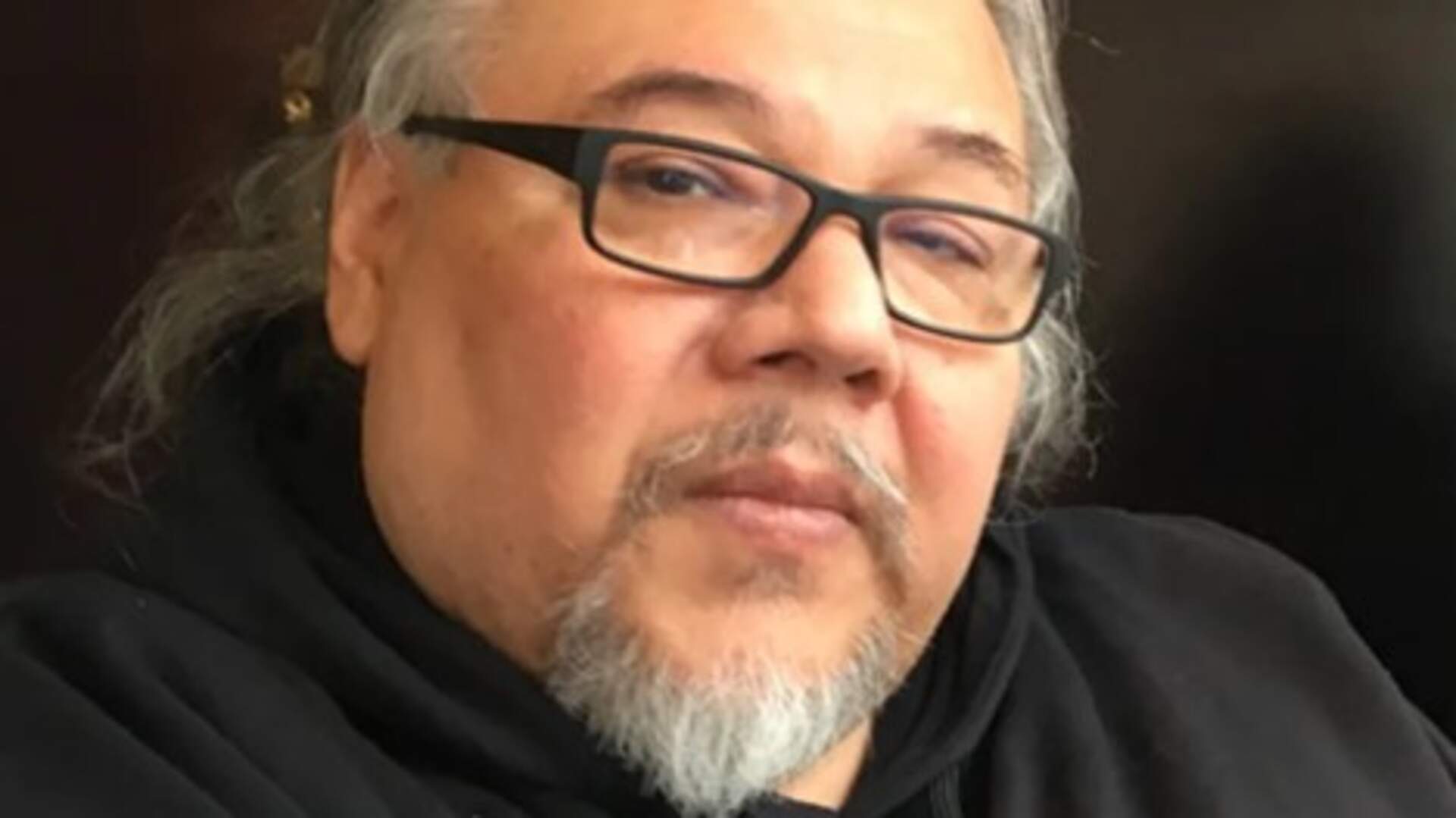Jeffrey M. Thomas
(Onondaga/Cayuga Nations, born 1956)
Onondaga/Cayuga Nations
Jeffrey Thomas is a globally recognized photographer, curator, and cultural theorist. His photographic practice re-contextualizes historical images of Indigenous Peoples. Born in Buffalo, New York, he studied at the State University of New York (SUNY) at Buffalo. He lives in Ottawa, Ontario, Canada. His curatorial projects, publications, and exhibitions demonstrate his commitment to work dealing with issues of race, aboriginality, and gender in both archival and contemporary photography.
Thomas describes himself as an "Urban-Iroquois," further explaining:
“My work would eventually lead to self-describe myself as an urban-Iroquois and finding a balance between the Iroquois identity my elders at Six Nations instilled me with as a teenager and the agency of survival in the city, in essence my career began with a goal of weaving a new story from the fragmented cultural elements left in the wake of North American colonialism." [1]
Looking back over his childhood he recalls sitting and listening to his elders tell stories, feeling strongly that one day he would tell his own. His opportunity came after a serious car accident in 1979. Though he had experimented with photography while completing his American Studies degree at the University of New York in Buffalo, it was the extended recovery after the car accident that pushed him to become a practicing photographer. "When I started working as a photographer that was the idea that I had in mind - to tell my own story. It was to define myself as I saw myself which was as an urban-based Iroquoian person. I remember looking for a definition of that, and I couldn’t find any and there are a lot of reasons why there wasn’t one. What I realized along with the absence of first nation practitioners from the past, was also this void of looking at the urban landscape through aboriginal eyes and what would that look like, what would an aboriginal photographer do, what would he photograph?" [2]
Thomas moved from Buffalo to Toronto in 1984. His feelings of isolation as an Indigenous photographer were soon replaced by a sense of community upon his discovery of the organization NIIPA (Native Indian/Inuit Photographers'' Association). "[it] was interesting because there was just sort of that new movement in defining ourselves and talking and just realizing that we weren’t alone and what does this all mean?". It was also during this time that Thomas took a snapshot of his son, Bear, that would change the direction of his practice. It was only after developing the image that Thomas realized its strength. It was as if the image forced the viewer to compare the stereotypical depiction of Indigenous Peoples, as seen on Bear’s hat, with that of his son, a young urban Indigenous boy. The graffiti on the wall acts almost as a call to action.
By 1986 Thomas had moved to Winnipeg Manitoba, and seven years later he moved to Ottawa Ontario. His move to the Nation’s capital was fueled by his desire to research how Indigenous Peoples were represented in official Canadian records. Later he would work for the National Archives of Canada, developing appropriate captions to replace dated terminology used to describe their collections of photos of Indigenous Peoples. In 1996 Thomas co-curated with Edward Tompkins Aboriginal Portraits from the National Archives of Canada.
His son, Bear, continued to appear in his work well into the 1990s. Later his practice shifted, and his photos began to feature miniature Indigenous figurines. His series, The Delegate, would lead to Scouting for Indians, a series in which Thomas searched towns, monuments, office facades, and government buildings for stereotypical representations of Indigenous Peoples.
His work includes the Indians on Tour series that he began in 2000, in which stereotypical "Indian" figurines are posed against natural or urban landscapes, and monuments.
Thomas was the subject of a documentary film by Ali Kazimi entitled Shooting Indians in 1997. The following year he received the Canada Council for the Arts, "Duke & Duchess of York Prize in Photography". In 2003, he became a member of the Royal Canadian Academy of Art. Fittingly, Thomas was then commissioned to research and design the first Aboriginal intervention into the Euro-Canadian art installation at the Art Gallery of Ontario, No Escapin’ This: Confronting Images of Aboriginal Leadership. Intended to mark the institution’s new commitment to the introduction of Native history into the gallery’s spaces, No Escapin’ This has also effectively solidified Thomas’s place at the forefront of scholarship at the intersection of Native and non-Native histories in Canada. In 2014-15 Thomas curated the exhibition Where Are the Children? Healing the Legacy of Residential Schools, an archival-photo show at the Glenbow Museum in Calgary. Most recently, in 2019, Thomas was the recipient of the Governor General's Awards in Visual and Media Art, where his work was featured in an exhibition at the National Gallery of Canada in honor of his accomplishment.
A prominent influence of Thomas is the work of American photographer Edward S. Curtis. Curtis’ seminal work, The North American Indian, would create a tension point for Thomas. “The idea was not to recreate a modern version of his study of tribal culture but to consider what he did ‘not’ photograph and move forward. My intent of engaging the people he photographed was to break through its stasis with a post-colonial conversation on Indian-ness. My series The Conversation is the result of my [extensive] journey.” [3]
His photographs are in the collections of the National Gallery of Canada, the Smithsonian National Museum of the American Indian in Washington D.C., The British Museum in London, England, and many other public and private collections throughout Canada and the United States.
For more information on Jeffrey Thomas, visit his website here.
[1] https://jeff-thomas.ca/artist-statement-2/
